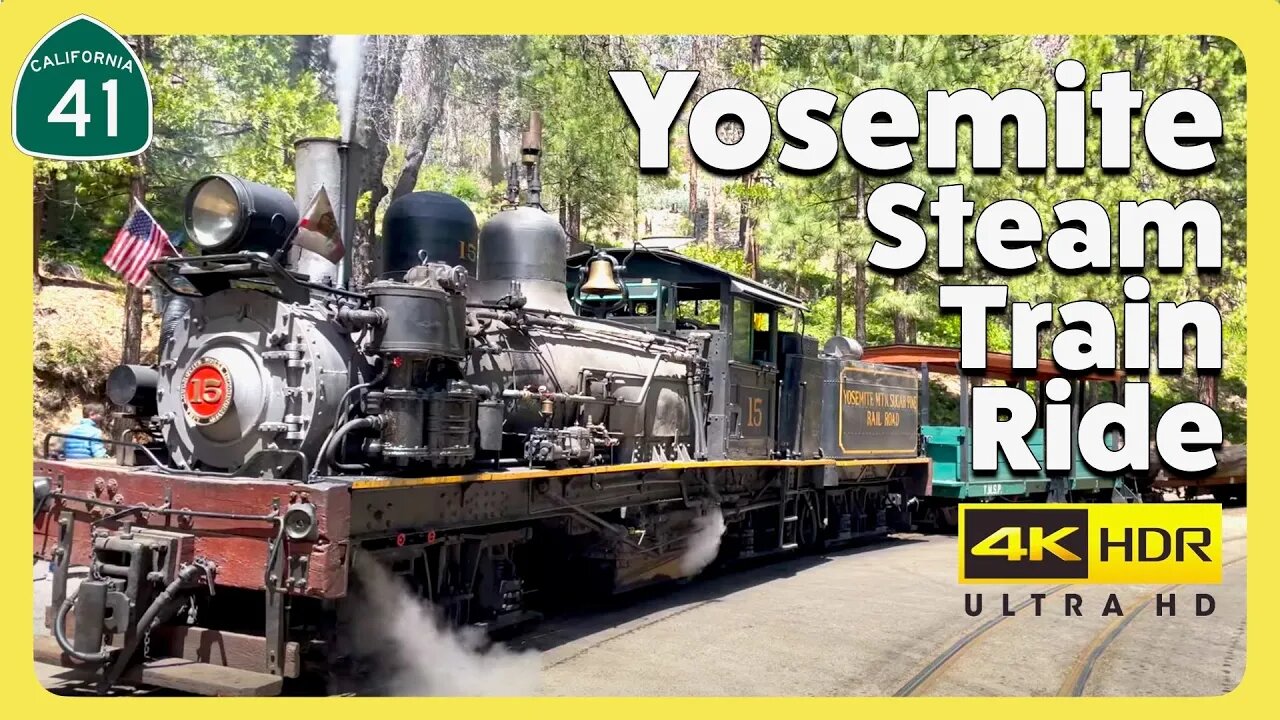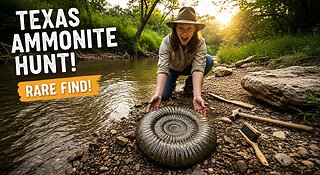Premium Only Content

2022 Yosemite Mountain Sugar Pine Railroad Steam Train near Yosemite National Park 4K HDR FULL RIDE
Yosemite Mountain Sugar Pine Railroad near Yosemite National Park 2022 4K HDR FULL RIDE
#Yosemite Mountain Sugar Pine #Railroad
00:00 Introduction to the Yosemite Mountain Railroad
00:39 Look at those pistons on the Shay
01:50 Close up look at engine #15
05:40 Getting ready to go
05:51 All aboard!
06:35 Departing the yard
08:42 Going through horse shoe bend
19:41 Stopping at the bottom of the canyon
22:33 Taking on water for the tender
23:21 The return ride back
27:00 A Steam Train ride through the National Forest
#YMSPRR
#yosemitemountainsugarpinerailroad15
#Yosemitemountainsugarpinerailroad2022
#yosemitemountainsugarpinerailroad10
#yosemitemountain
#yosemitemountainsugarpinerailroadreviews
#yosemitevalley,
#SteamTrain
#nationalpark,
#nationalparks #TrainRide
The Yosemite Mountain Sugar Pine Railroad (YMSPRR) is a historic 3 ft (914 mm) narrow gauge railroad with two operating steam train locomotives located near Fish Camp, #California, in the Sierra National Forest near the southern entrance to Yosemite National Park. Rudy Stauffer organized the YMSPRR in 1961, utilizing historic railroad track, rolling stock and locomotives to construct a tourist line along the historic route of the Madera Sugar Pine Lumber Company.
Service began with the purchase of three-truck Shay locomotive No. 10 from the West Side Lumber Company railway of #Tuolumne, California. Built in 1928, No. 10 was recognized as the largest narrow gauge Shay locomotive—and one of the last constructed. After his retirement in 1981, Rudy Stauffer was succeeded by his son, Max, as the railroad's owner and operator. In 1986, the YMSPRR purchased Shay No. 15—also a former West Side Lumber Company locomotive—from the West Side & Cherry Valley Railroad tourist line in Tuolumne.
The two steam locomotives operate daily during the summer months, while the railroad's Model A "Jenny" railcars, capable of carrying about a dozen passengers, typically handle operations during the off-season.
The current railroad follows a portion of grade originally carved into the mountain by the Madera Sugar Pine Lumber Company in the early 20th century. The company originated in 1874, when it was organized as the California Lumber Company to log the area surrounding Oakhurst, California. The Madera Sugar Pine Lumber Company once had a large sawmill at Sugar Pine, California, just south of the current YMSPRR. The railroad had seven locomotives, over 100 log cars, and 140 miles (230 km) of track in the surrounding mountains. In addition to the railroad, the Company also transported lumber in a flume that stretched 54 miles (87 km) from Sugar Pine to Madera, California. This was the most efficient way to transport rough cut lumber out of the mountains for finishing and transport at the bottom of the mountain. The Madera Sugar Pine Lumber Company practiced clearcutting, which removed almost every single tree within the stands of timber surrounding the YMSPRR track. The thick forest surrounding YMSPRR today belies this history, although large stumps from the original old growth timber dot the forest floor lining the tracks.
Due to the onset of the Great Depression and a lack of trees, the operation closed in 1931. But the graded right-of-way through the forest remained, enabling the Stauffer family to reconstruct a portion of the line in 1961. The current railroad utilizes locomotives, converted log disconnect cars, and other railroad equipment purchased from the West Side Lumber Company after it ceased railroad operations in 1961.
Max Stauffer died on March 10, 2017. In late August 2017, the Railroad Fire, which started near the railroad, destroyed West Side Lumber Company equipment stored on a side track.
No. 10: a 3 ft (914 mm) narrow gauge three-truck Shay steam locomotive constructed for the Pickering Lumber Company. The locomotive was completed on March 2, 1928 by the Lima Locomotive Works of Lima, Ohio and later acquired by the West Side Lumber Company in 1934. No. 10 burns oil, with a capacity to hold 1,200 U.S. gallons (1,000 imperial gallons; 4,500 liters) of oil and 3,420 US gal (2,850 imp gal; 12,900 L) of water. This locomotive is reputedly the largest narrow gauge Shay locomotive ever constructed.
No. 15: also a 3 ft (914 mm) narrow gauge three-truck Shay steam locomotive. No. 15 was originally constructed as the No. 9 for Norman P. Livermore & Company, out of San Francisco, California, and soon thereafter sold to the Sierra Nevada Wood & Lumber Co. The locomotive was completed on May 20, 1913 by the Lima Locomotive Works of Lima, Ohio. No. 15 burns oil, with a capacity to hold 1,000 US gal (830 imp gal; 3,800 L) of oil a
-
 4:45
4:45
Adventures by Ned
1 year agoFlying over Pinecrest Lake and driving around the Stanislaus National Forest at the end of Summer
75 -
 LIVE
LIVE
Spartan
4 hours agoHalo for a bit, Octopath after maybe
259 watching -
 2:58:09
2:58:09
SavageJayGatsby
5 hours agoSpicy Saturday with Mally! - Wedding in 2 Months!
29.2K1 -
 1:47:14
1:47:14
VapinGamers
7 hours ago $0.60 earnedTools of the Trade - Does Production Matter? with Tim the Tool Man from Louder with Crowder
17.8K2 -
 LIVE
LIVE
BSparksGaming
5 hours agoHappy Saturday! Battlefield 6 Beta! PS5 Gameplay
85 watching -
 15:53
15:53
Exploring With Nug
13 hours ago $0.38 earnedExploring Texas Creeks for Fossils – Prehistoric Treasures Everywhere!
29.1K4 -
 9:02
9:02
MattMorseTV
11 hours ago $1.35 earnedTrump's FBI just DECLASSIFIED the UNEDENIABLE PROOF.
40.5K91 -
 3:57:54
3:57:54
TinyPandaface
4 hours agoYour FACE is A Gaming Channel! | Mario Golf Super Rush w/ The Fellas!
6.37K2 -
 2:50:10
2:50:10
sophiesnazz
8 hours ago $4.12 earned6kd in these ghost lobbies !socials !specs
26.5K2 -
 25:39
25:39
MYLUNCHBREAK CHANNEL PAGE
1 day agoThey Already Had A.I.
53.9K42